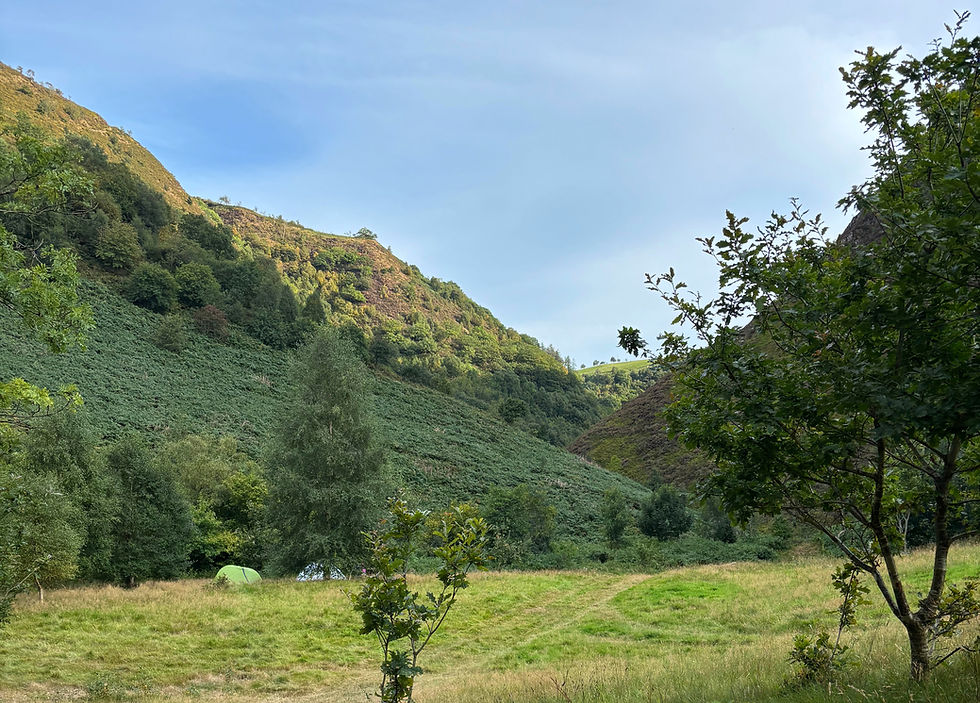The Story of Our Cacao: Part 2 - From Soil Microbes to Sacred Drink
- Ecstatica

- May 16
- 4 min read
Updated: Aug 28
Where microorganisms, soil, and sunlight dance together – the living process that brings our cacao to life

If you missed Part 1 – all about the origins and history of cacao – definitely go and give it a read here. It’s a good one.
In that first part, Juliana from Tagbi Chocolate shared how this heart-opening plant has shaped land, people and politics in the Sierra Nevada. Now, in Part 2, we explore how cacao is made – from the living soil it grows in, to the thick, rich paste that becomes the bars we use for our cacao drink at Ecstatica events. So let’s hand it back to Juliana – our cacao expert and friend – to take us through the next part of the journey.
“In cacao quality, we can talk about the genetics, the soil health, and the post-harvest and transformation process.
The origin, Sierra Nevada, comes with amazing genetics – so, check ✅. Soil health has been one of the most gratifying things to learn; if learning about cacao was already making us feel passionate and excited, learning about this huge living being that is the soil has just been amazing.
Just like humans, the soil is also full of microorganisms like our gut; and these microorganisms are involved in different processes in cacao making. The first is a symbiotic relationship: the way the cacao trees get their nutrients, and how the microorganisms get the energy to keep reproducing thanks to the trees. That’s why on Tagbi’s farm, we reproduce different types of microorganisms that we find in the sea, forest, grass, leaves, etc., and provide the land with plenty of organic matter around the trees. The idea is to put more life back into the land, to create living, healthier food.
So now, the process of making cacao goes like this:
During the harvest, we select healthy, ripe cacao fruit that’s full of glucose. When the fruit is sick, not ripe enough, overripe, has fungus, or has been opened by an animal, it will be lower in glucose, which we need for the fermentation process. Also, selecting it guarantees the best flavour and aroma profile.
Farmers and Indigenous community members from seven different villages collect the selected raw cacao every week during harvest season. We have several meeting points, and even if a car gets as close as it can, the community still needs to bring the cacao from their farms using motorcycles, mules, or carrying it. It could take half an hour, or even two hours to reach these points. Then, the cacao finally arrives at the warehouse where the magic keeps happening.
Now we put the cacao in wooden boxes made to hold at least 400 kilos each. This is a lot of raw cacao for our small farms; that’s why we have the strategy of collecting it all together.
Once we fill the boxes with cacao, every 24 hours we check the temperature and mix the cacao in a specific order. The goal is to observe a rise in temperature, from room temperature to 48°C by the end of the process. This can take up to 6 days to achieve proper fermentation.

When the beans inside look cracked, kidney-shaped, and we see a red wine-coloured liquid, it means they are full of acetic acid and ready for the natural drying process. The first day of drying should be slow – we don’t want the bean to seal from the heat and trap the vinegar taste inside. But after 2 days, it’s time to rush the process to avoid fungus. This drying phase can take another 6 days.
Now it’s time to sort the beans by size. We use a machine for this, so the big beans are separated from the smaller ones to improve the roasting process. Cacao’s aroma is delicate, and our beans are not that big compared to other types, so we do a low roast to preserve all the flavours and aromas. After this, we peel and grind it, and most of the people involved in this transformation process are women.

There are a lot of people involved in the whole process, and each part is equally important. Every batch of cacao will probably taste different because we are tasting a specific moment that will not repeat – how much sunlight the cacao trees received, the rain, the soil, everyone’s hard work and energy.
It’s a living process, always changing and transforming, like nature does. And the most beautiful thing is that our bodies recognise it – when natural, healthy food enters our system, the body responds. Thanks to a chemical process, plant and human become one:
we receive the sunlight, the rain, the soil, the hard work and energy from all the people involved, from nature, and the love carried through this plant.”
Thank you, Juliana – and I can say, hand on heart, that both myself and many others on the dance floor have truly felt that love.
Before you go…Check out this beautiful video Juliana sent us, made especially for the Ecstatica community 🌿✨




